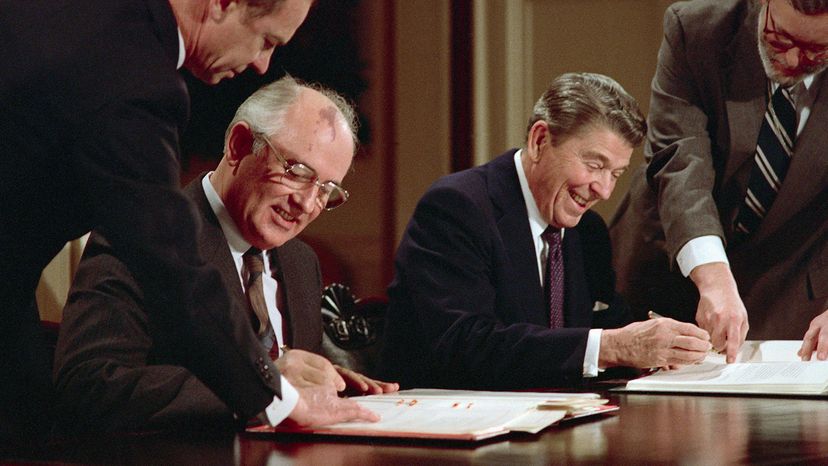Foreign Policy Responsibilities of the U.S. President

When President Ronald Reagan took office, one of his highest priorities was to carry out the War on Drugs declared by Richard Nixon. President Reagan beefed up funding for the Drug Enforcement Agency, lobbied Congress to create legislation that increased prison sentences for offenders caught with the emerging drug crack cocaine, and negotiated with the foreign nations where drugs funneling into the United States originated.
Reagan created new extradition treaties with Central American governments that allowed foreign drug dealers, like members of Colombia's Medellín cartel, to be tried in American courts. Official corruption in foreign nations didn't extend into the United States, though the U.S.'s legal arm now reached outside of the nation's borders.
Advertisement
Creating treaties is a constitutional power afforded to the presidency, and George Washington solidified the president's authority in negotiating with other nations. Washington established the use of treaties, leaving it to Congress to approve them. For the most part, Congress has complied. The United States currently has extradition treaties with more than 100 countries because of presidential negotiations [source: Council on Foreign Relations]. In addition, the United States is a member of NATO, the United Nations and a host of other international organizations because presidents saw fit to join and lobbied Congress to approve the treaties. Conversely, if a president decides a treaty isn't in the best interest of the nation, the decision rests solely in his or her hands as seen in President Bill Clinton's decision not to sign the Kyoto Treaty on climate change.
The president also acts as head diplomat for the United States. He or she is responsible for visiting foreign heads of state to press U.S. policy and to maintain good foreign relations. The president, in the eyes of other nations, serves as the figurehead for the entire country. This is a double-edged sword; the president can be beloved by residents of foreign nations or hated.
Much of how the United States decides to react to international affairs has been molded by presidential decisions. The U.S. policy of leading the Western Hemisphere (created by James Monroe) was added to by the (Theodore) Roosevelt Corollary that allowed the United States to intervene in the affairs of the rest of the Americas. The Truman Doctrine made the United States essentially the police of the world, and the (George W.) Bush Doctrine of preemptive war gives the United States license to strike unprovoked against foreign nations it perceives as a threat.
Treaties are subject to two-thirds approval in the Senate, but presidents use executive agreements as a way around Senate involvement in their dealings with foreign nations. Like executive orders, these have the binding effect of law over federal agencies, but don't require the consent or confirmation of Congress. Because of the unchecked power they provide, presidents have relied more heavily on executive agreements over the years. At the outset of World War II, the United States was party to 800 treaties and 1,200 executive agreements; between 1940 and 1989, the United States ratified 759 treaties and created 13,106 new executive agreements [source: FindLaw].
The president also has the sole ability to recognize other nations, a powerful foreign relations tool. A nation that seeks favor with the United States may curtail activities that Americans find contrary to human rights in order to become recognized by the United States. Formal recognition is an important factor in international affairs, and being recognized by the United States often creates recognition by other nations as well.